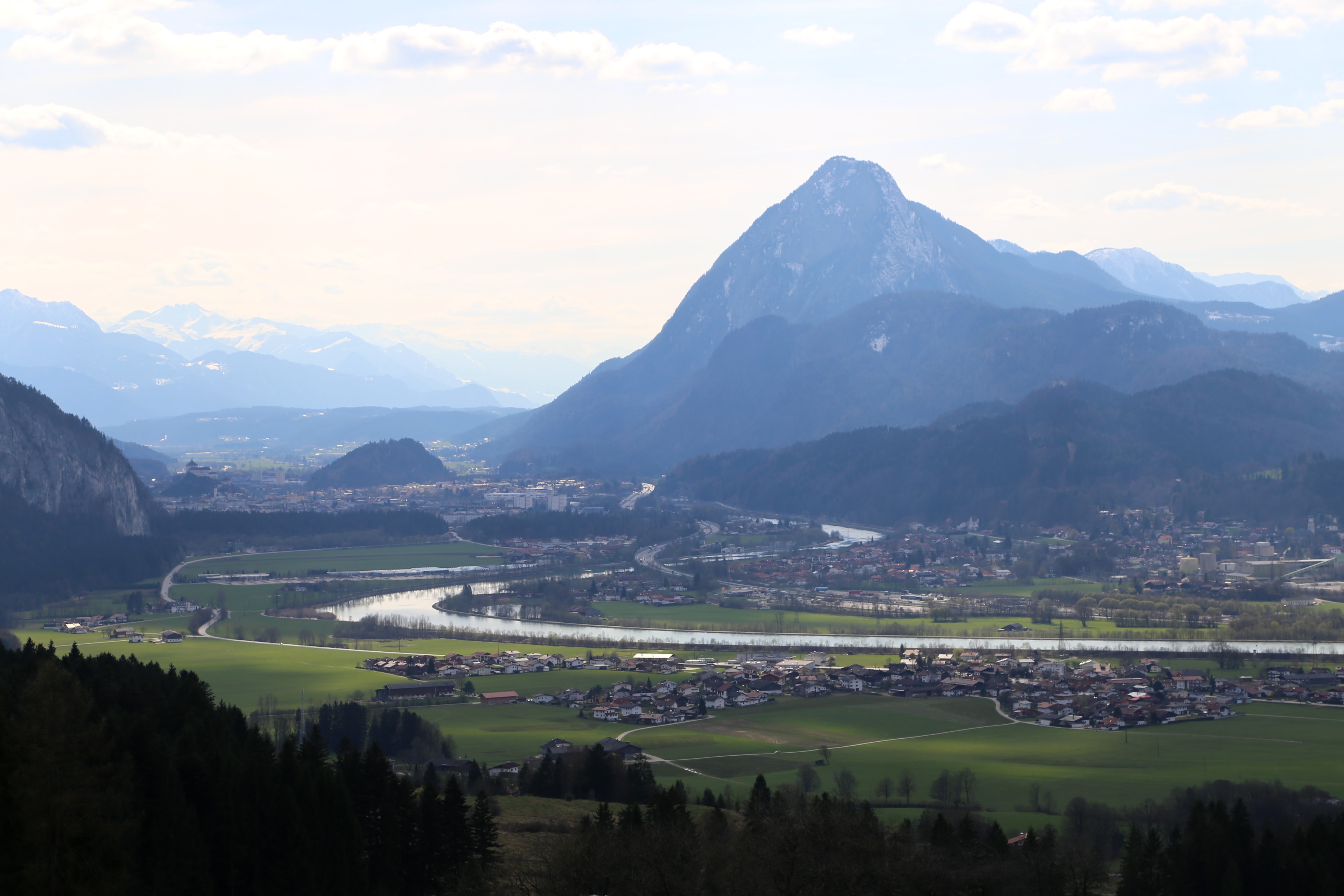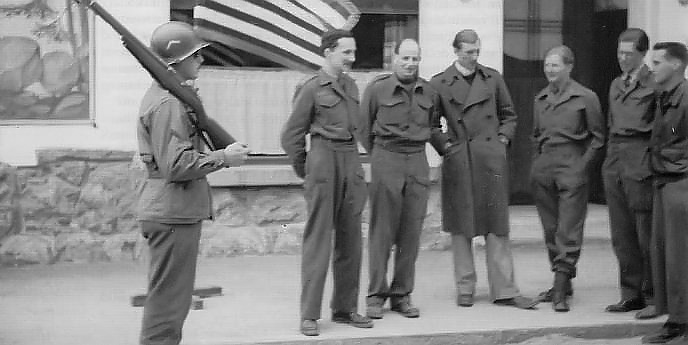|
The Spirit In The Cage
''The Spirit in the Cage'' is a book written by Peter Churchill, DSO, Croix de Guerre, published in 1954. It was the last of three books describing his wartime experience in the French section of the Special Operations Executive. It describes his captivity in France and Germany, and that of Odette Sansom, from April 1943 until the end of the war, when they were eventually released. Synopsis ''The Spirit in the Cage'' describes the captivity of Peter Churchill and his courier, Odette Sansom, in France then in Germany. Churchill and Sansom claimed they were a married couple and related to Winston Churchill to make themselves seem more valuable as prisoners and less likely to be executed as spies. They were sent to different concentration camps, where they were sentenced to death, and Odette tortured, and but both escaped execution. Churchill was initially taken to the German barracks in Annecy, then to Fresnes, where he remained until 13 February 1944, when he was transferred t ... [...More Info...] [...Related Items...] OR: [Wikipedia] [Google] [Baidu] |
Peter Churchill
Peter Morland Churchill, (14 January 1909 – 1 May 1972) was a British Special Operations Executive (SOE) officer in France during the Second World War. His wartime operations, which resulted in his capture and imprisonment in German concentration camps, and his subsequent marriage to fellow SOE officer, Odette Sansom, received considerable attention during the war and after, including a 1950 film. Early life and career Churchill's father was William Algernon Churchill (1865–1947), a British Consul who served in Mozambique, Amsterdam, Pará in Brazil, Stockholm, Milan, Palermo, and Algiers. His father was also an art connoisseur, and author of what is still the standard reference work on early European paper and papermaking, ''Watermarks in Paper'',. His mother was Violet (née Myers). He was a brother of Walter Churchill, a Royal Air Force pilot during the war, and Oliver Churchill, who was also an SOE officer. Churchill was born in Amsterdam, Netherlands, on 14 Januar ... [...More Info...] [...Related Items...] OR: [Wikipedia] [Google] [Baidu] |
Dachau Concentration Camp
Dachau () was the first concentration camp built by Nazi Germany, opening on 22 March 1933. The camp was initially intended to intern Hitler's political opponents which consisted of: communists, social democrats, and other dissidents. It is located on the grounds of an abandoned munitions factory northeast of the medieval town of Dachau, about northwest of Munich in the state of Bavaria, in southern Germany. After its opening by Heinrich Himmler, its purpose was enlarged to include forced labor, and, eventually, the imprisonment of Jews, Romani, German and Austrian criminals, and, finally, foreign nationals from countries that Germany occupied or invaded. The Dachau camp system grew to include nearly 100 sub-camps, which were mostly work camps or , and were located throughout southern Germany and Austria. The main camp was liberated by U.S. forces on 29 April 1945. Prisoners lived in constant fear of brutal treatment and terror detention including standing cells, flog ... [...More Info...] [...Related Items...] OR: [Wikipedia] [Google] [Baidu] |
1954 Non-fiction Books
Events January * January 1 – The Soviet Union ceases to demand war reparations from West Germany. * January 3 – The Italian broadcaster RAI officially begins transmitting. * January 7 – Georgetown-IBM experiment: The first public demonstration of a machine translation system is held in New York, at the head office of IBM. * January 10 – BOAC Flight 781, a de Havilland Comet jet plane, disintegrates in mid-air due to metal fatigue, and crashes in the Mediterranean near Elba; all 35 people on board are killed. * January 12 – Avalanches in Austria kill more than 200. * January 15 – Mau Mau leader Waruhiu Itote is captured in Kenya. * January 17 – In Yugoslavia, Milovan Đilas, one of the leading members of the League of Communists of Yugoslavia, is relieved of his duties. * January 20 – The US-based National Negro Network is established, with 46 member radio stations. * January 21 – The first nuclear-powered submarine, t ... [...More Info...] [...Related Items...] OR: [Wikipedia] [Google] [Baidu] |
Fifth United States Army
Fifth is the ordinal form of the number five. Fifth or The Fifth may refer to: * Fifth Amendment to the United States Constitution, as in the expression "pleading the Fifth" * Fifth column, a political term * Fifth disease, a contagious rash that spreads in school-aged children * Fifth force, a proposed force of nature in addition to the four known fundamental forces * Fifth (Stargate), a robotic character in the television series ''Stargate SG-1'' * Fifth (unit), a unit of volume used for distilled beverages in the U.S. * Fifth-generation programming language * The fifth in a series, or four after the first: see ordinal numbers * 1st Battalion, 5th Marines * The Fraction 1/5 * The royal fifth (Spanish and Portuguese), an old royal tax of 20% Music * A musical interval (music); specifically, a ** perfect fifth ** diminished fifth ** augmented fifth * Quintal harmony, in which chords concatenate fifth intervals (rather than the third intervals of tertian harmony) * Fifth ( ... [...More Info...] [...Related Items...] OR: [Wikipedia] [Google] [Baidu] |
Transport Of Concentration Camp Inmates To Tyrol
The transport of concentration camp inmates to Tyrol refers to a transfer of 139 high-profile prisoners ('' Prominenten'') of the Nazi regime in the final weeks of the Second World War in Europe from Dachau Concentration Camp in Bavaria to South Tyrol. The transport is notable for involving a confrontation between the escorting SS and SD detachments and a force of the German Army (''Heer'') in Niederdorf. Ultimately, the SS/SD were faced with overwhelming firepower and stood down, whereupon the army unit "adopted" the Prominenten and escorted them to their final destination at the Hotel Pragser Wildsee some 12 km off. There, the prisoners were protected from both fanatical German forces and Italian ''partisans'' until relieved by a company of the US 5th Army on May 4, 1945. Background This movement was personally ordered by Adolf Hitler and actioned by Gestapo chief SS Gruppenführer Heinrich Müller. This group of Prominenten comprised men, women and children from seventeen ... [...More Info...] [...Related Items...] OR: [Wikipedia] [Google] [Baidu] |
Tyrol (region)
Tyrol (; historically the Tyrole; de-AT, Tirol ; it, Tirolo) is a historical region in the Alps - in Northern Italy and western Austria. The area was historically the core of the County of Tyrol, part of the Holy Roman Empire, Austrian Empire and Austria-Hungary, from its formation in the 12th century until 1919. In 1919, following World War I and the dissolution of Austria-Hungary, it was divided into two modern administrative parts through the Treaty of Saint-Germain-en-Laye: * State of Tyrol: Formed through the merger of North and East Tyrol, as part of Austria * Region of Trentino-Alto Adige: At that time still with Souramont (Cortina d'Ampezzo, Livinallongo del Col di Lana and Colle Santa Lucia) and the municipalities Valvestino, Magasa, and Pedemonte, seized in 1918 by the Kingdom of Italy, and thus since 1946 part of the Italian Republic. With the founding of the European region Tyrol-South Tyrol-Trentino the area has its own legal entity since 2011 in the form of ... [...More Info...] [...Related Items...] OR: [Wikipedia] [Google] [Baidu] |
Niederdorf, South Tyrol
Niederdorf (; it, Villabassa ) is a municipality in South Tyrol in northern Italy, about northeast of Bolzano. Geography Niederdorf borders the following municipalities: Prags, Toblach, Welsberg-Taisten, and Gsies. History Coat-of-arms The emblem is per fess and the base per pale. The first show a sable The sable (''Martes zibellina'') is a species of marten, a small omnivorous mammal primarily inhabiting the forest environments of Russia, from the Ural Mountains throughout Siberia, and northern Mongolia. Its habitat also borders eastern Kaz ... eagle double-headed on or; in the second and third a half steinbock to face each other of or and sable. It’s the insignia of the Lords of Kurz von Thurn who ruled the village from 13th to 18th century. The emblem was granted in 1966. Society Linguistic distribution According to the 2011 census, 92.09% of the population speak German, 7.76% Italian and 0.15% Ladin as first language. References External links Homepage of ... [...More Info...] [...Related Items...] OR: [Wikipedia] [Google] [Baidu] |
Brenner Pass
The Brenner Pass (german: link=no, Brennerpass , shortly ; it, Passo del Brennero ) is a mountain pass through the Alps which forms the border between Italy and Austria. It is one of the principal passes of the Eastern Alpine range and has the lowest altitude among Alpine passes of the area. Dairy cattle graze in alpine pastures throughout the summer in valleys beneath the pass and on the mountains above it. At lower altitudes, farmers log pine trees, plant crops and harvest hay for winter fodder. Many of the high pastures are at an altitude of over ; a small number stand high in the mountains at around . The central section of the Brenner Pass covers a four-lane motorway and railway tracks connecting Bozen/Bolzano in the south and Innsbruck to the north. The village of Brenner consists of an outlet shopping centre (supermarkets and stores), fruit stores, restaurants, cafés, hotels and a gas station. It has a population of 400 to 600 (). Etymology Older, obsolete the ... [...More Info...] [...Related Items...] OR: [Wikipedia] [Google] [Baidu] |
Prominenten
The German term ''Prominente'' (singular masculine ''Prominenter'') was used in World War II to describe high-profile prisoners from various countries that were imprisoned in for example the POW camp for officers Colditz (Oflag IV-C) or the Nazi concentration camps Sachsenhausen and Dachau for possible use as hostages. These prisoners had among them former statesmen, politicians, political dissidents and priests as well as prisoners of war related, or believed to be related, to allied politicians and royalties. The Colditz POW's were liberated on 14April 1945 by the U.S. Army, whereas the prisoners from Sachsenhausen and Dachau where liberated from their SS-guards by in turn by troops from the Wehrmacht and shortly thereafter by units from the 42nd Infantry Division and the 45th Infantry Division after the Transport of concentration camp inmates to Tyrol The transport of concentration camp inmates to Tyrol refers to a transfer of 139 high-profile prisoners ('' Prominenten'') of ... [...More Info...] [...Related Items...] OR: [Wikipedia] [Google] [Baidu] |
Innsbruck
Innsbruck (; bar, Innschbruck, label=Austro-Bavarian ) is the capital of Tyrol and the fifth-largest city in Austria. On the River Inn, at its junction with the Wipp Valley, which provides access to the Brenner Pass to the south, it had a population of 132,493 in 2018. In the broad valley between high mountains, the so-called North Chain in the Karwendel Alps (Hafelekarspitze, ) to the north and Patscherkofel () and Serles () to the south, Innsbruck is an internationally renowned winter sports centre; it hosted the 1964 and 1976 Winter Olympics as well as the 1984 and 1988 Winter Paralympics. It also hosted the first Winter Youth Olympics in 2012. The name means "bridge over the Inn". History Antiquity The earliest traces suggest initial inhabitation in the early Stone Age. Surviving pre-Roman place names show that the area has been populated continuously. In the 4th century the Romans established the army station Veldidena (the name survives in today's urban district Wilt ... [...More Info...] [...Related Items...] OR: [Wikipedia] [Google] [Baidu] |
.jpg)






